How AI Can Help Solve Complex Fashion Taxonomies
by Jess Erdman, Content Marketing LeadJune 2021

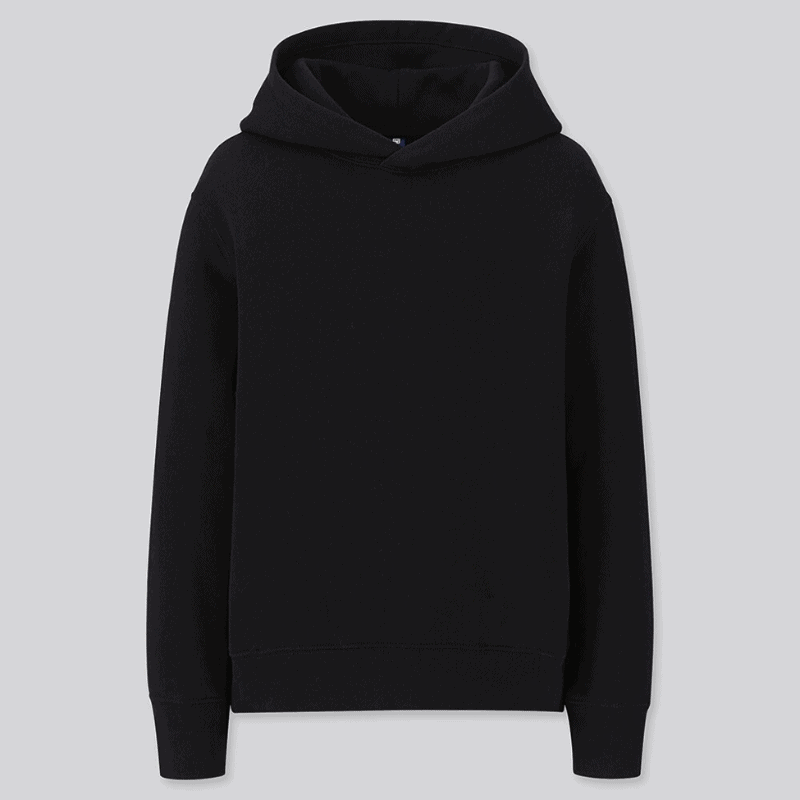
How many words are there to describe the above image? Depending on overall knowledge of fashion, location, and regionalisms, your customers may use the following words:
And, how would your customers describe the “hoodie’s” attributes? Perhaps they would begin to describe the material, length, color, and/or fit. Now, imagine the sheer number of possible attribute combinations and descriptors (a tight-fitting sweater, for example). There are thousands of possible search combinations.
eCommerce retailers are struggling to find a system for managing the growing fashion taxonomy. For reference, fashion taxonomy is defined as the science of naming, describing, and classifying items into categories. And it affects every component of the customer experience, from search and discovery to product recommendations.
In this article, we’ll go over a background of search/search intent, and how artificial intelligence is helping retailers resolve the complexities of fashion taxonomy.
Curious to stay up-to-date with fashion taxonomy and AI news? Sign-up for YesPlz.AI’s fashion tech newsletter to receive the latest news and articles from experts in the industry.
Let’s consider the problem of fashion taxonomy from the customer’s point of view. When a customer lands on an eCommerce website, they immediately begin the product discovery process.
Product discovery can be defined as a blend of:
– search
– product browsing
– product recommendations
The benefit of eCommerce is also its Achille’s heel when it comes to search: there are more products available online than in-store, but it’s also becoming increasingly difficult for customers to find what they’re looking for, regardless of search intent.
Unfortunately, online search isn’t as forgiving as in-store. If a customer accidentally uses the wrong name for a fashion item in-store, the sales associates will clarify. If a customer accidentally uses the wrong name for a fashion item online, it’s likely that they’ll hit a dead-end in search results.
Due to old technology that is unable to support more complex product descriptions, online shoppers are left with inadequate search systems.
When it comes to product recommendations, collaborative filtering tends to rule the game. Collaborative filtering can be helpful because it pulls large amounts of data to predict similar products – but can struggle to recommend relevant products if it’s a cold start. Oftentimes, collaborative filtering isn’t product-centric nor does it consider fashion common sense (a customer that is purchasing a pair of sneakers doesn’t want to see a pair of cowboy boots). In fact, collaborative filtering rules many of our favorite eCommerce websites, such as Amazon, but as you may have noticed, the recommended products on Amazon are often inaccurate.
Before we dive into how artificial intelligence can improve fashion taxonomies, it’s vital to understand how customers search for products on an eCommerce page. According to Baymard, there are four types of eCommerce searches for retailers to know:
1) Exact: The customer has a specific goal in mind
Search Example: GG Marmont small matelassé shoulder bag
Where Fashion Taxonomy Falls Short: Based on the specificity of the search, some words may be misspelled, leading to a dead-end.
2) Product: The search is intended for a product category, but not necessarily a specific brand.
Search Example: Dress pants
Where Fashion Taxonomy Falls Short: If interpreting the terms separately, customers may receive results that include either a dress or pants. Or, search engines may use a different term.
3) Feature: The customer is looking for a special feature or detail.
Search Example: Cross-body bag
Where Fashion Taxonomy Falls Short: As more features are added to the search, it’s more likely that the terms won’t match up with a retailer’s fashion taxonomy
4) Thematic: The search is based on a “theme” such as a special occasion or season.
Search Example: Summer dress for wedding
Where Fashion Taxonomy Falls Short: Thematic searches are one of the hardest search queries for search engines to recognize, due to the often rigid nature of fashion taxonomies. Thematic searches may change based on demographics, location, and seasonality – all of which would need to be mapped out and accounted for within the fashion taxonomy.
You can learn more about types of customer search intent and how they relate to fashion taxonomy here.
So, to sum up the current problems with fashion taxonomy:
Search and discovery:
Product recommendations:
Artificial intelligence in fashion is leading the way for solving some of the most complex problems in fashion taxonomy.
With artificial intelligence, there are two different approaches to solving the complexity of fashion taxonomies: 1) through better, more robust text-based searches, and 2) through visual search
Artificial intelligence and text-based search
Companies such as Bloomreach are offering search tools that use artificial intelligence that use NLP (natural language processing) to better understand the intent of search queries. Semantic search can also help search engines better decipher search queries – semantic search, at its core, is the ability of search engines to consider both intent and context in search queries.
What does this mean for fashion taxonomies? Let’s break down an example:
A customer completes a thematic search for a pair of “loose-fitting summer dress pants.”
This search is complex because it has a number of different components: fit (loose), occasion (summer), and a two-part word that could be interpreted separately or together, depending on the search engine’s intelligence (dress pants).
Artificial intelligence can help make this complex thematic search easier through:
Text-based artificial intelligence has the potential to change the way customers experience search and discovery. Through more accurate search results and targeted product recommendations, companies such as Algolia are upending old ways of search – and using technology to fill in the gaps left by fashion taxonomy.
The next tier of artificial intelligence is when text and visual search are combined to create a hybrid search. This is an extremely powerful way to help solve the complexity of fashion taxonomy.
Visual search is defined as using artificial intelligence to search by images. Many of the biggest retailers, from Amazon to Fashion Nova, have implemented visual search in their websites using computer vision.
Visual search has an advantage when it comes to solving complex fashion taxonomy: it eliminates the need for a search engine to perfectly understand text-based search intent (which is complex) – and engages the customer in the search and discovery process more than text.
Fashion Nova, for example, has implemented visual search as an alternative search method:
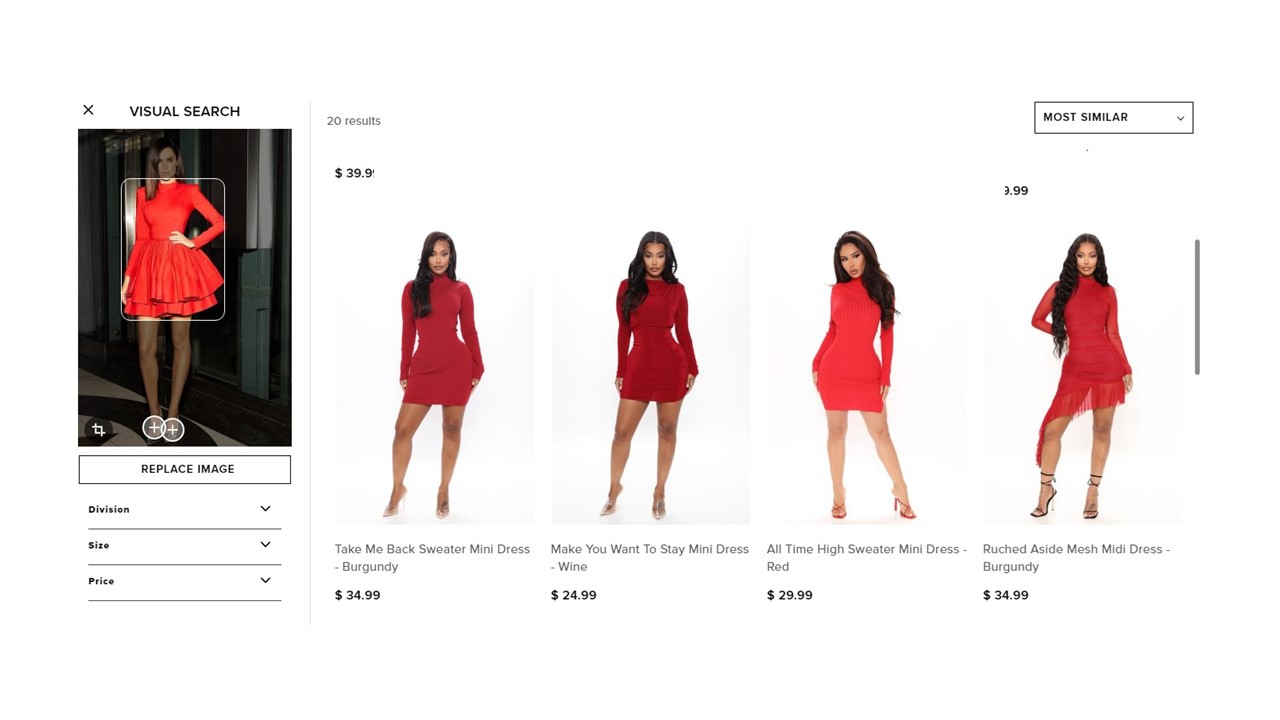
In the example above, customers can upload a picture and receive relevant search results in return based on dress style and color.
However, some of the user-initiated search terms can be lost in visual search, depending on the search engine. For example, a solely visual search engine may overlook detailed features such as the cut of a dress or the exact fit.
There are other visual search engines, such as YesPlz AI, that offer a user-initiated search experience, combined with artificial intelligence and visual search.
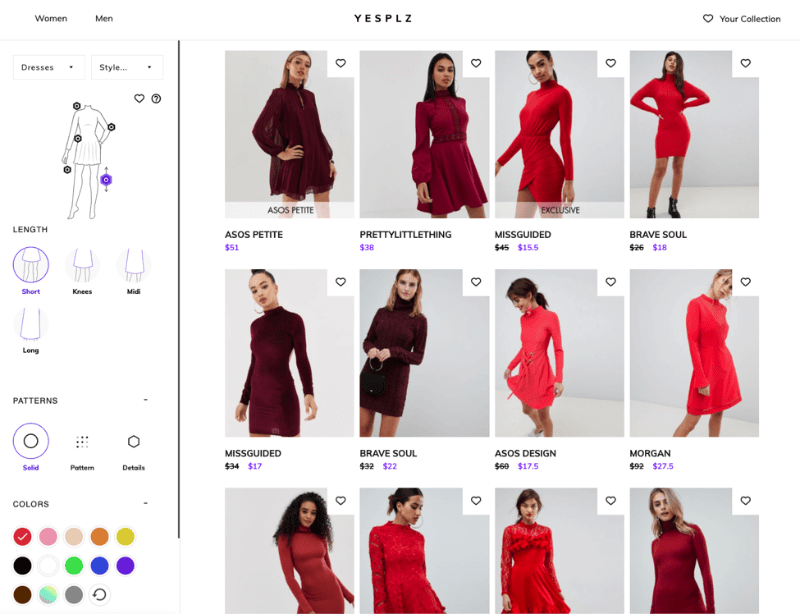
The same search for a red dress can be broken down based on product-specific details.
The advantages of visual search in solving complex fashion taxonomies include:
Visual search is an evolving category of search, and as artificial intelligence becomes better at recognizing and tagging product attributes, it will continue to grow.
Tackling complex fashion taxonomy is a heavy task, but with artificial intelligence, retailers now have different approaches to try. Through text-based and visual search tools, retailers have the power to change the way customers experience their products, leading to higher engagement rates and more conversions.
The future of artificial intelligence as a remedy to complex fashion taxonomies is bright – and you can expect to see more products in the market in the future.
Interested in learning more? Sign-up for YesPlz.AI’s fashion tech newsletter to receive the latest news and articles from experts in the industry.
Note: This article was originally published in WhichPLM, an online magazine dedicated to Product Lifecycle Management for the retail, footwear and apparel industries.
Written by Jess Erdman
Content Marketing Lead
I'm passionate about creating cool content. The best part? I get to learn new things about fashion tech and ecommerce everyday. Have an idea or opinion about this article? Reach out at jess@yesplz.ai
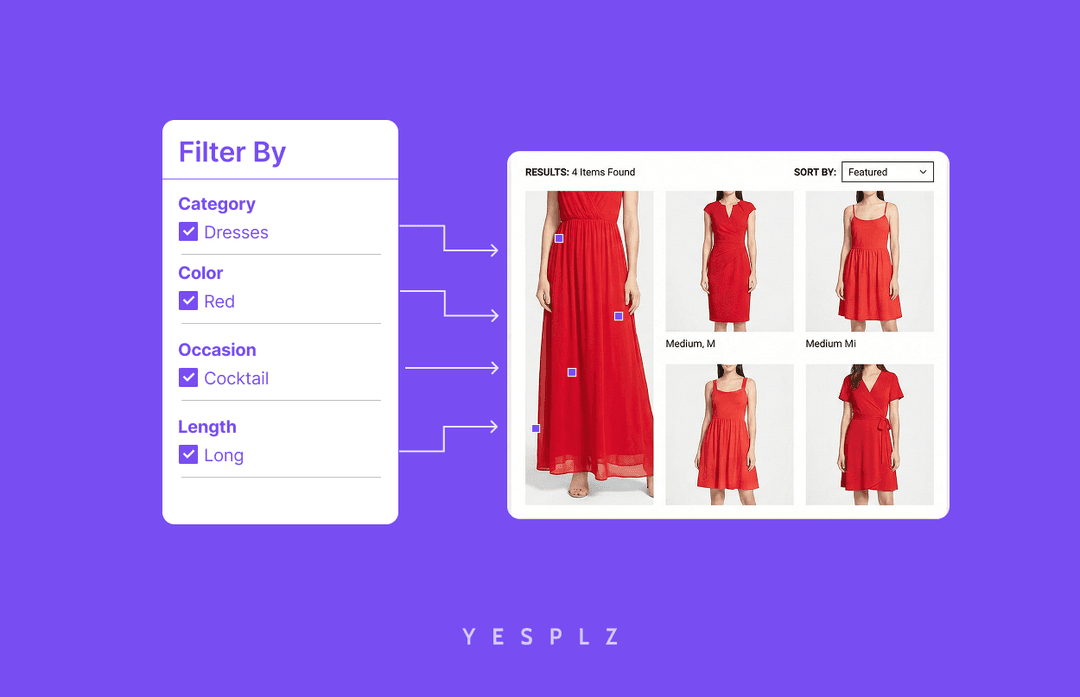
Stop losing sales to poor product filtering. Discover how AI simplifies creating Shopify filters, saving you 25-50 hours per 100 products.
by YesPlz.AI
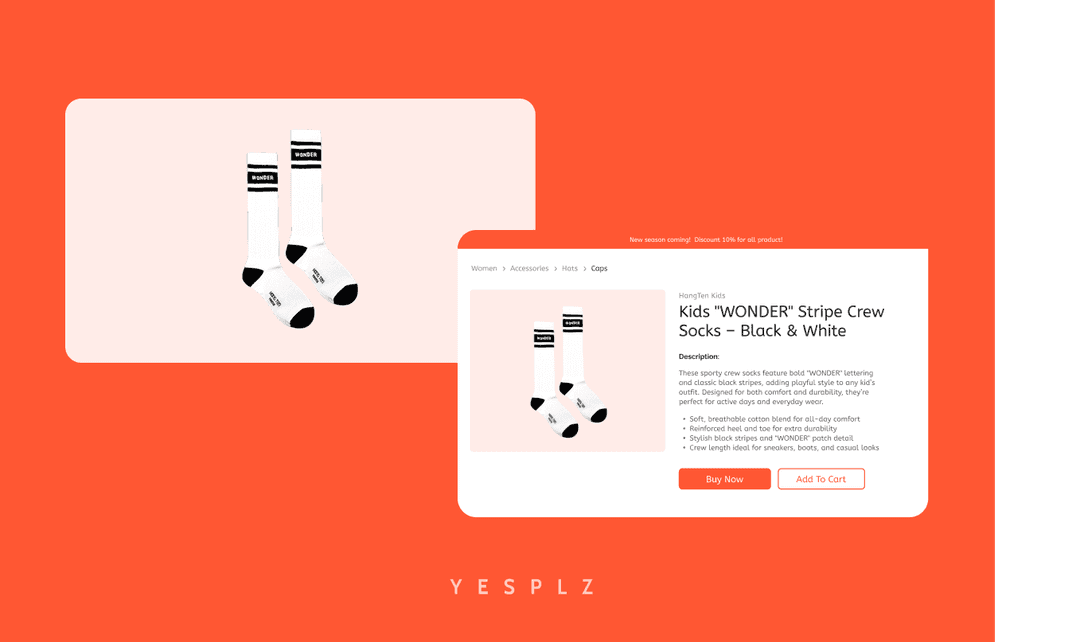
Automate Shopify product pages and cut 50–100 hours of manual work. AI generates product titles, descriptions, and metadata instantly from product images.
by YesPlz.AI